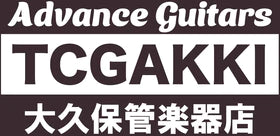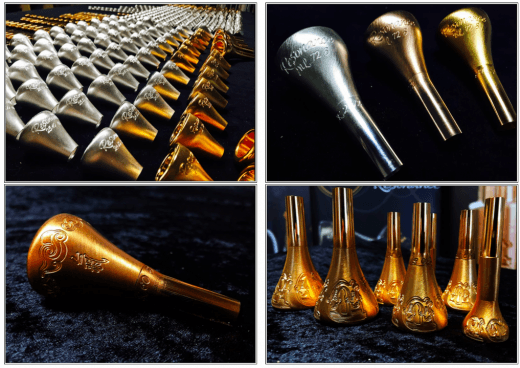About the AR RESONANCE Mouthpiece
What kind of mouthpiece is the AR RESONANCE? I heard that you can choose between a cup and a backbore, but I don't really understand the technical details.... There are probably many people who are not familiar with the technical details.
Don't worry. If you read this articleYou too can become an AR RESONANCE Master today!today.
First, let's take a quick look at the overall features.
It can be used for all genres of music, including brass band, jazz, and pop music.
The sound of the upper register becomes thicker, and articulation becomes easier.
Bright and clear sound.
Easier upper register... These words sound like a dream, but they are one of the words we hear from many of our customers who have switched from a standard mouthpiece to a new one.

Let's choose a top.
☆Point
The rim shape is the same for all cups. You can change the depth of the cups without any sense of discomfort.
Bach mouthpieces have a slightly softer rim shape than Bach mouthpieces, so Bach users will not feel any discomfort.
Wide rim and flat rim options are available. The wide rim is wider and slightly rounded, like a Bob Reeves or Giardinelli rim, while the flat rim is flat and tight, like a Silky rim. Most people prefer the normal rim, so it is best to try the regular type first.
Narrow down the size
VL (Bach 1 equivalent)
L (Bach 1-1/4 equivalent)
ML (Bach 1-1/2 equivalent)
M (Bach #3 equivalent)
MS (Equivalent to Bach No. 7)
S (Bach 10-1/2 equivalent)
VS (Equivalent to Bach No. 15)
XS (Equivalent to Bach No. 18)
What? You don't usually use Bach? Well then...Here is the tableBach is a very popular language.
M is often preferred by those who use the equivalent of No. 5, but it is also possible to order an intermediate rim size, "M-MS", by special order.
Select Depth
The depths are A, B, C, D, E, Lead, and Lead Plus, in that order.
C is the most standard cup, and most people who normally use a medium cup try this cup first.
B, on the other hand, has a softer sound, but despite its deep cup, it has excellent treble response. On the other hand, the slightly shallower D cup produces a brighter sound, but not so bright that it cannot be used in wind bands. If you need an all-around performance in the middle to upper registers, this cup will surely help you.
The E to Lead Plus depth is also popular with big band reed players. For those who use shallow cups, many feel that E is still a generous depth with excellent response in the upper register.
Other frequently asked depth comparisons are that the D cup is slightly deeper than the Bob Reeves M cup, and the Lead Plus cup is equivalent to the ES cup.
Combined with the cup sizes mentioned above, this would result in designations such as "MSC, M Lead, MLB," and so on.
At this point, it is almost as if it has been decided.
There are also choices of materials...
There are seven types of materials: brass, bronze, buffalo, titanium, stainless steel, damascene steel, and nickel.
Brass is preferred if you are in doubt, and bronze if you want a tighter and thicker sound.
[Brass] This is the most common and familiar material used in modern mouthpieces. It has a light response and a flexible tone.
[Bronze] Made of phosphor bronze, this model is as popular as brass. It has a lively and quick response, and is a "good sounding" material. The sound is thicker and more stable.
[Buffalo" refers to buffalo horn, a very light material with a quick response. When blown gently, it has a warm, woody sound, and when blown hard, it has a bright, crisp sound.
[Titanium] Compared to brass, titanium has a wider dynamic range and a clearer directivity of sound. A good choice for those with metal allergies.
[Stainless steel] Slow response and muffled articulation. The dead sound is suited for acoustic sounds such as jazz combos and has a unique sound.
[Damasteel] Sound is similar to stainless steel above. The characteristic pattern is made by combining two materials of different hardness. The price is expensive, but it is definitely a material you will not see anywhere else.
[Nickel] Good response and highly directional sound. Because it tends to produce a clear sound profile, it matches well with shallow cups and other combinations.

[Next is the key... Selecting a back bore]
Many of you may have noticed the importance of the back bore since the introduction of the AR RESONANCE.
It plays an important role in greatly controlling the blowing feel and sound, such as the spread of sound and the way the breath enters the instrument. The greatest advantage of the two-piece design is that it is easy to choose the one that suits you best.
Some of you may be wondering, "Backboards look the same, but what's the difference?" Some of you may be wondering, "What is the difference between backboards and backboards?
The mouthpiece has a shape that gradually widens from the entrance to the exit, but the angle is different. The tighter the angle, the more direct the sound will be and the more resistance it will have. The more open the angle is, the more air can enter the mouthpiece and the more expansive and brighter the sound becomes.
Generally speaking, a tight back bore is usually matched with a shallow cup, and an open back bore with a medium to deep cup, but some people prefer the exact opposite setting depending on the sound they want and their preferred blowing feel.
Types of backbores
AR offers five types of backbores, starting with the tightest: LEAD, XS, S, M, and L.
The M backbore is the most popular model in our store, as it offers a good balance of the excellent pitch, sound, and control of the AR mouthpiece. It is very popular.
There are also two other backbores, the Classical M and the Classical L. Although not exclusively for classical music, these mouthpieces are very popular among wind band and orchestra players because the internal shape has been carefully modified to produce a clear, dense sound.
Although there is a difference in resistance from the regular models, those who prefer the S back bore tend to choose the Classical M, while those who prefer the M back bore tend to choose the Classical L.
● Material
There is only one type of back boa: brass. This is good news for those who are already tired of worrying.
We are almost there!
Throat size
You can choose between #21 (4.0mm) and #19 (4.2mm) throats. Most of the throats sold in Japan are 40-throat, and it is recommended that you try this throat first. The choice is available for the top and back bore respectively, and basically the same numerical value is used.
●Weight
Standard, Medium, Bullet, and Heavy are available, with Bullet and Heavy having a heavier top weight for balance. If you are using a standard weight instrument, you will be able to feel the superiority of the AR mouthpiece by starting with the Standard.
Plating
Silver, gold, and pink gold are available. You can choose a different color for the top and back bore, or unify them with pink for a very pretty look. When you get down to it, even the finish of the plating can be a point that changes the feel and tone of the instrument, but that is a topic for another time...
That's all for now. Thank you for reading.
If you have read this far, you are now an AR RESONANCE master!
The world of two-piece mouthpieces may seem difficult at first glance, but it is an excellent tool to analyze the specifications that best suit you.
We have over 50 tops and all types of backbores in stock at all times. If you tell us what mouthpiece you are currently using, we can guide you to the specifications that are similar to your current one, so please feel free to contact us.
If you would like to order by mail order, please click here.
https://www.tcgakki.com/search/?cp=11&co=48
AR RESONANCE is a hot topic, try it for yourself!

